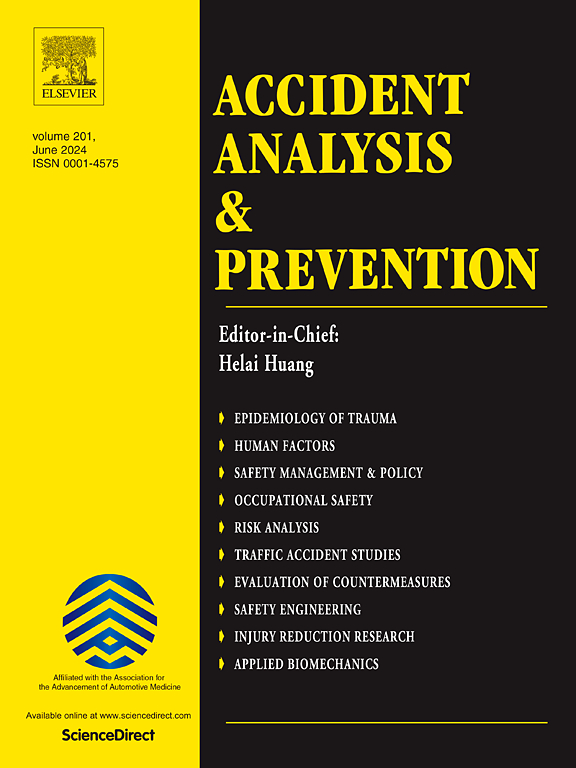Spatial heterogeneity effect of built environment on traffic safety using geographically weighted atrous convolutions neural network
IF 5.7
1区 工程技术
Q1 ERGONOMICS
引用次数: 0
Abstract
The built environment exerts a significant influence on the frequency and severity of traffic accidents. Spatially uniform assumptions on the impacts of built environment factors commonly employed in existing research may lead to inconsistent and contradictory findings. While some studies have investigated spatial heterogeneity using geographically weighted regression models (GWR), these approaches frequently neglect critical aspects including the road network distance between built environment features and the non-linear decay of influence relationships. To address these methodological limitations, this study develops a geographically weighted atrous convolutional neural network regression model (GACNNWR) to more accurately capture the spatial heterogeneity in the impact of built environment factors on traffic safety. Based on empirical data of traffic accidents and built environment from Jinan City, our results demonstrate that the GACNNWR model outperforms traditional analytical methods such as GWR model. Intersection density and bus stop density are identified as having a more substantial impact on traffic accidents compared to population density, land use mix, and destination accessibility. Additionally, population density is shown to exert a bidirectional influence on traffic accidents, while the spatial variability in the effects of land use mix is relatively pronounced. These findings provide important implications for the design of context-sensitive built environments and the formulation of localized traffic safety management strategies aimed at mitigating crash risks.
求助全文
约1分钟内获得全文
求助全文
来源期刊

Accident; analysis and prevention
Multiple-
CiteScore
11.90
自引率
16.90%
发文量
264
审稿时长
48 days
期刊介绍:
Accident Analysis & Prevention provides wide coverage of the general areas relating to accidental injury and damage, including the pre-injury and immediate post-injury phases. Published papers deal with medical, legal, economic, educational, behavioral, theoretical or empirical aspects of transportation accidents, as well as with accidents at other sites. Selected topics within the scope of the Journal may include: studies of human, environmental and vehicular factors influencing the occurrence, type and severity of accidents and injury; the design, implementation and evaluation of countermeasures; biomechanics of impact and human tolerance limits to injury; modelling and statistical analysis of accident data; policy, planning and decision-making in safety.
 求助内容:
求助内容: 应助结果提醒方式:
应助结果提醒方式:


